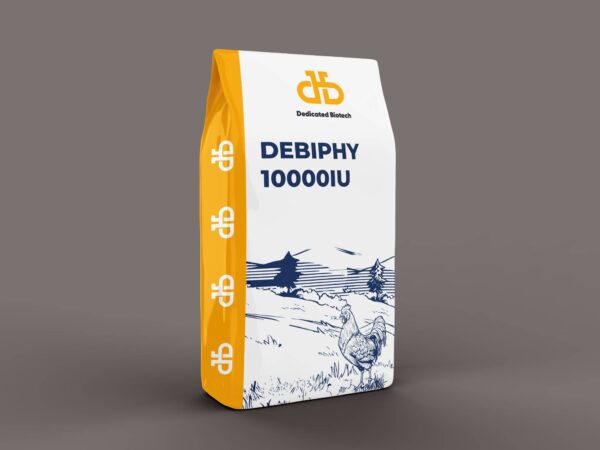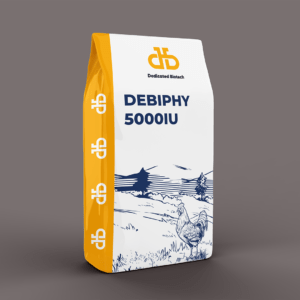
DebiPhy 10000 UI
Phytase plays a crucial role in feed formulation by being a biological enzyme that specifically degrades phytic acid molecules, releasing inositol and phosphoric acid to provide animals with bioavailable phosphorus. Phytic acid is the primary form of phosphorus found in many plant-based ingredients, but it is challenging for monogastric and non-ruminant animals to digest and absorb. This is due to their limited endogenous production of phytase. By significantly improving the degradation rate of phytic acid, Phytase unlocks the bioavailability of phosphorus in feed ingredients. This leads to enhanced utilization of nutrients, including.
energy, proteins, and minerals, resulting in improved animal
performance.






